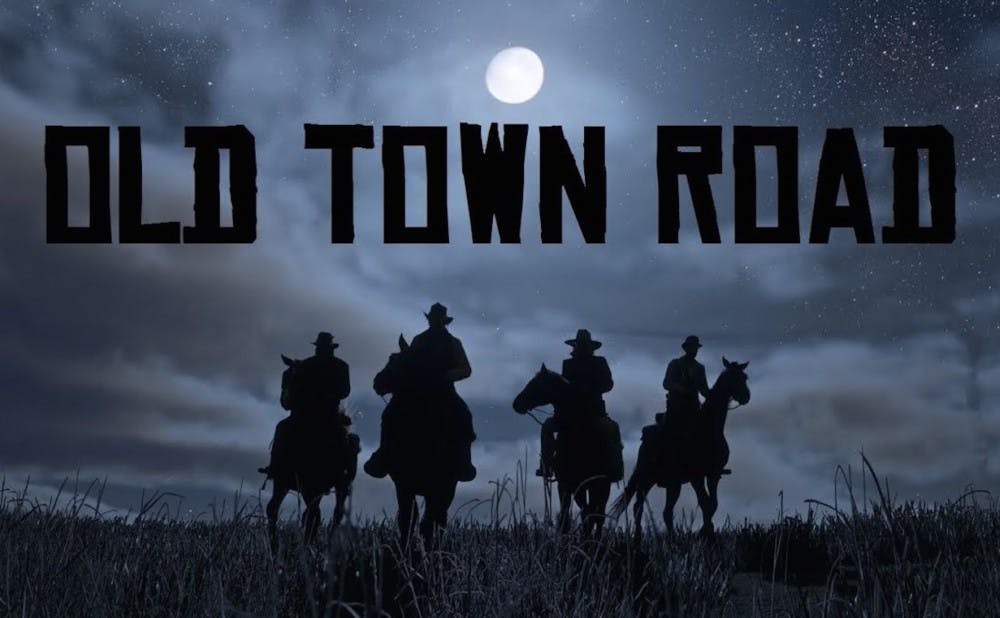Nearly 16 years ago, OutKast released “Hey Ya!,” a single that stands as one of the biggest hits of the new millennium. For all its ubiquity today, though, “Hey Ya!” was deceptively revolutionary: Blending an acoustic guitar-driven hook with a funk bassline, rapped breakdowns and an atypical time signature, the song seemed to signal a new dawn for genre — or, rather, the lack thereof. Writing at the end of the decade for Pitchfork, music critic Douglas Wolk observed, “It seemed like the walls between rock and R&B and hip-hop were about to topple and from then on there would just be this enormous pool of popular music that everyone could swim around in.”
Perhaps Wolk’s prognosis was a bit optimistic, but the landscape of popular music today has only inched closer to that genreless ideal: The line between emo and rap has increasingly blurred, while the term “indie” now stands more for a mood than for any particular sound. This collective cross-pollination reached a peak this year with “Old Town Road,” a novelty of “country trap” from a previously-unknown rapper, Lil Nas X, that has worked its way up the charts and into the ears of every Internet user over the last two months. Its success — and the controversy over genre that has ensued, thanks to its exclusion from Billboard’s country charts — may finally bring the promise of “Hey Ya!” to fruition.
“Old Town Road” is the type of song that could only have happened with the invention of the Internet. With its haphazard yet halfway-earnest depictions of both country and rap tropes (“Ridin’ in a tractor / Lean all in my bladder”), it strikes the sort of post-post-ironic stance that makes for easy meme fodder. Its production, all melancholic synthesized banjo picks and hi-hats, is decidedly DIY yet radio-ready in a way that’s only possible in the age of Soundcloud. The track first gained notoriety on the short-form video-sharing platform TikTok, and for that reason, it’s the first 15 seconds (which include the most memorable line, “I got the horses in the back”) that are the most well-known. But you wouldn’t be missing much: At just one minute and 53 seconds, “Old Town Road” is remarkably slight, even unsatisfying. Maybe that’s why it’s racked up 65 million plays on Spotify. Like the best online content, it’s practically built for replays.
The real story of “Old Town Road,” though, has been the question of its genre. When on March 27 Billboard removed the track from its Hot Country Songs chart — where it had peaked at no. 19, ahead of Carrie Underwood, Kacey Musgraves and Florida Georgia Line — it sparked a conversation about what defines “country,” a genre that has historically been defined by its overwhelming whiteness. (For its part, Billboard clarified that the decision “had absolutely nothing to do with the race of the artist.” Problem solved, folks!) According to the company, the main problem with “Old Town Road” was instead in its “musical composition,” deeming that the song “does not embrace enough elements of today’s country music to chart in its current version.” Never mind that today’s country music has incorporated more and more elements of hip-hop, or that the singalong chorus of “Old Town Road” would fit right in, both lyrically and musically speaking, with any other blue-jean-dirt-road single on the charts.
It is true that black artists are underrepresented in country music, with only a few enjoying considerable success in the industry — most notably, Charley Pride in the 1970s and ‘80s and, more recently, Darius Rucker. But what the discussion surrounding Lil Nas X’s single has largely ignored is the fundamental flaws of the Billboard charts themselves. “Old Town Road” doesn’t fit into any chart, because it doesn’t need to.
In the late 1950s, when popular music was just beginning to be a worldwide phenomenon, the Billboard singles charts were divided into three general categories: pop, country and R&B. While the pop singles were more or less universally palatable, the country and R&B charts represented two sides of a clear racial divide: Although both genres have roots in the American blues tradition, the term “country and western” was almost exclusively used to apply to white artists catering to white audiences, while “R&B” denoted black artists marketed to black audiences. This legacy remains with us today in the form of genre charts, and it’s impossible to ignore when considering where a song like “Old Town Road” is said to belong. While Billboard may cite “musical composition” as a deciding factor, it’s ultimately marketing, more than music, that drives the content of its charts.
A track like “Old Town Road,” then, exposes the charts for what they are at this point — which is to say, fairly useless. The rise of streaming, where most singles now receive the bulk of their plays, has already complicated the calculus of the pop charts, and as genres become more nebulous, the charts’ role in chronicling popular taste only seems more dubious.
If, at some point, “Old Town Road” gets reinstated to the Hot Country Songs chart (a prospect that may have just gained some steam thanks to an assist from Billy Ray Cyrus), it could be a consequential moment for the future of both hip-hop and country. But it wouldn’t change what artists from Andre 3000 to Lil Nas X have known all along: that genres are made to be broken.
Get The Chronicle straight to your inbox
Signup for our weekly newsletter. Cancel at any time.

